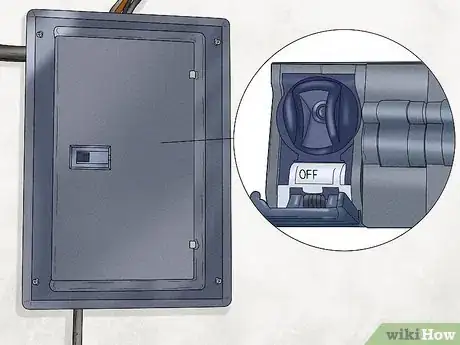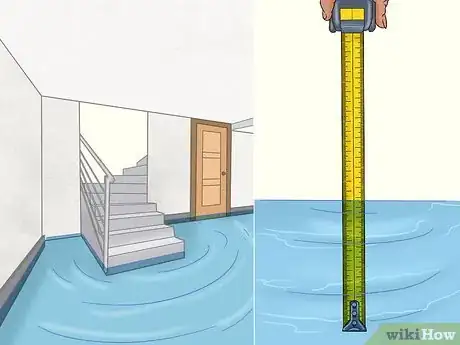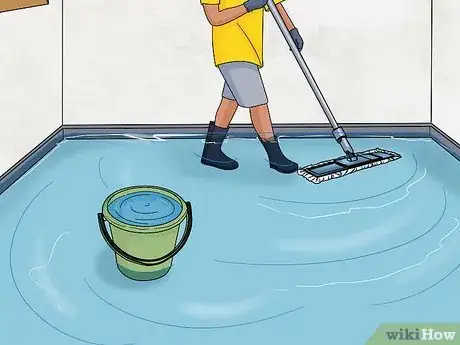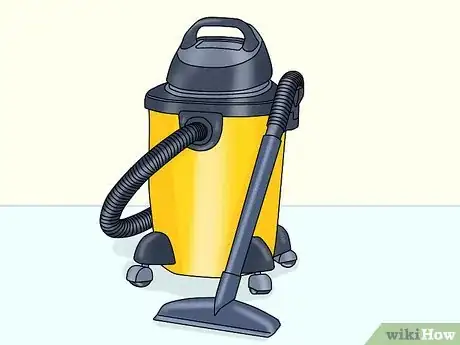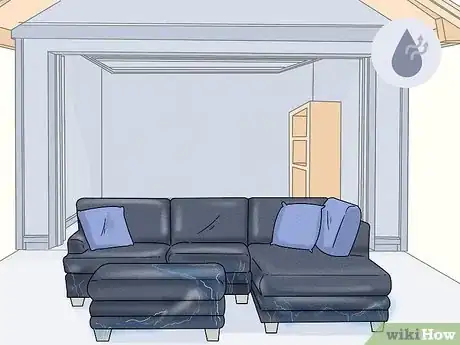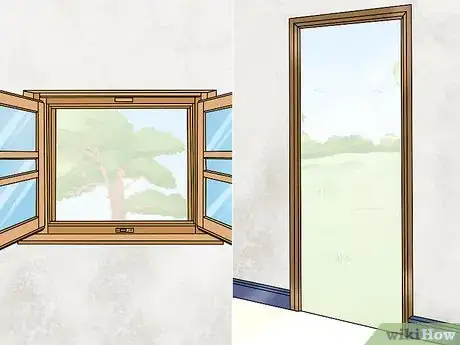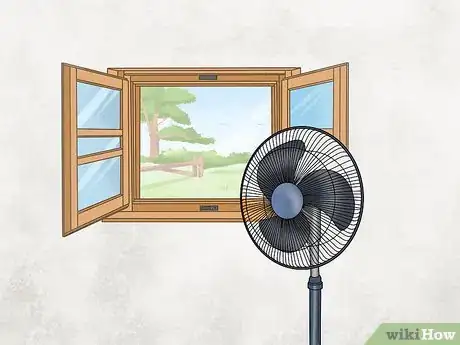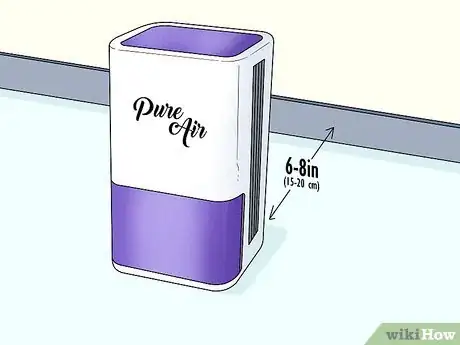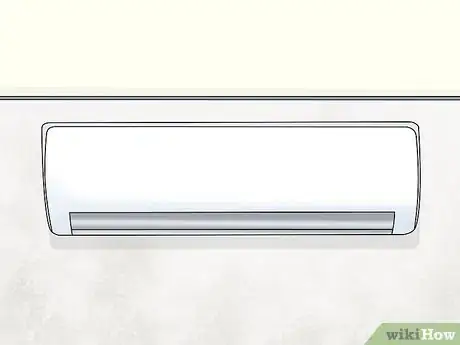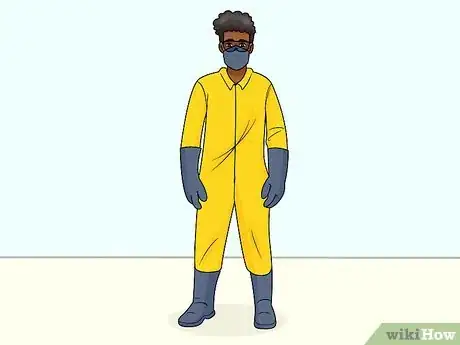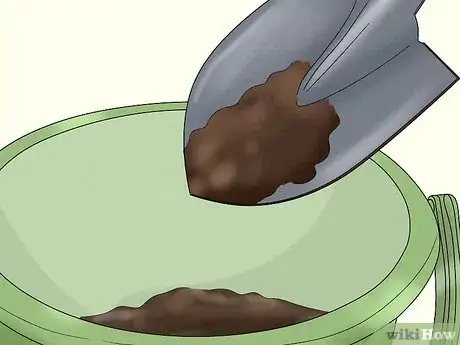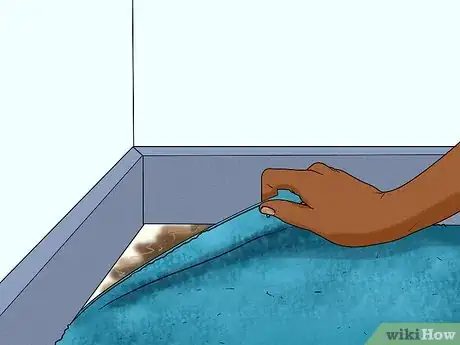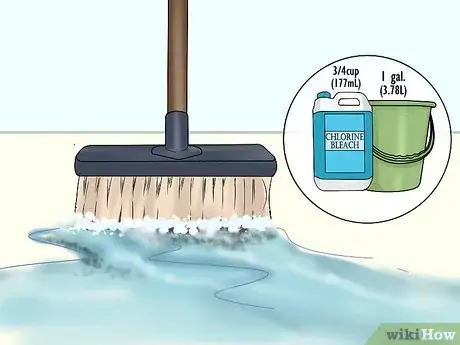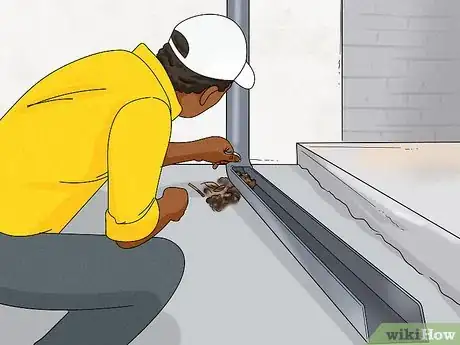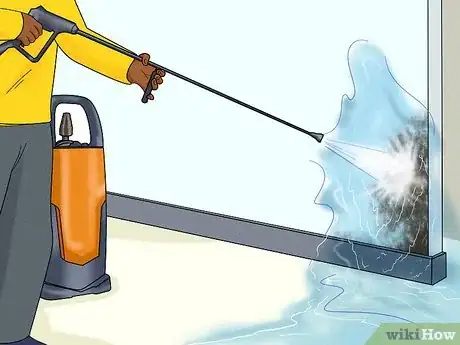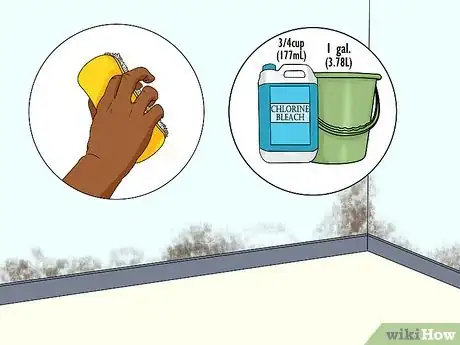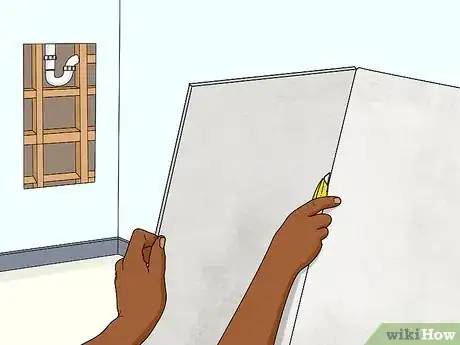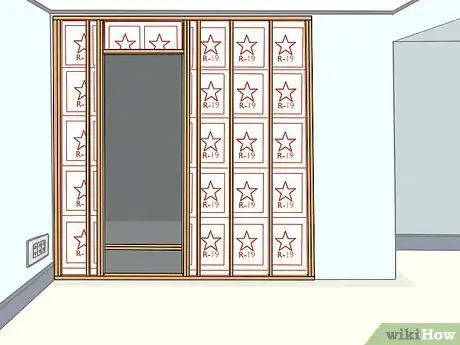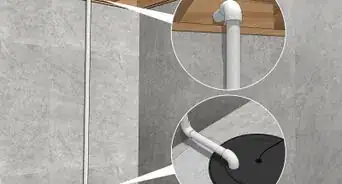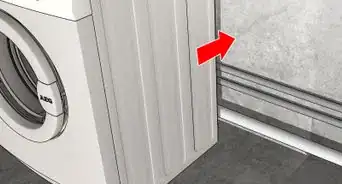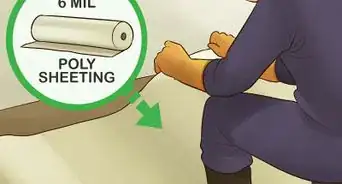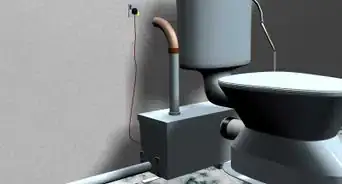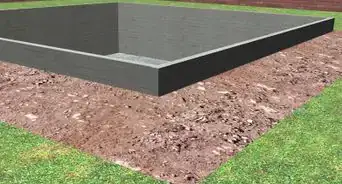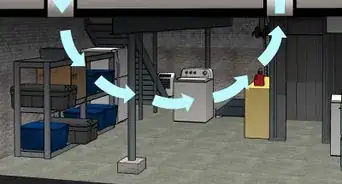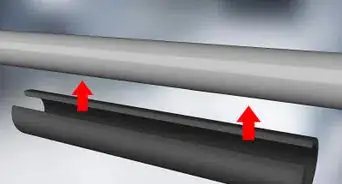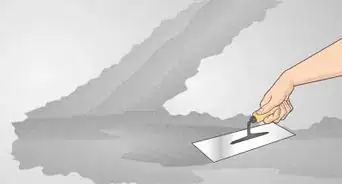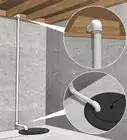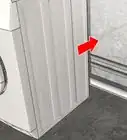This article was co-authored by Ryan Owsiany. Ryan Owsiany is a Drywall and Painting Specialist and the Owner of Patch and Paint Pros in Conshohocken, Pennsylvania. With over two decades of experience, Ryan specializes in interior and exterior house painting as well as drywall, plaster, and water damage repair. Ryan holds a BS in Industrial Engineering from Penn State University. Patch and Paint Pros only employ experienced, friendly painters that understand proper preparation is required to ensure client satisfaction on every painting project.
There are 8 references cited in this article, which can be found at the bottom of the page.
This article has been viewed 20,749 times.
A basement flood can happen because of heavy rains or other extreme weather or because of something like a home plumbing accident. Any way you look at it, a flooded basement is no fun to deal with. Drying out your basement after a flood might feel like a daunting task that will take weeks, but don’t despair. As long as you follow the right steps, it’s actually a process that you can (and should) get done in a couple of days.
Steps
Water Removal
-
1Shut off the power supply to your basement before you start. Turn the power off yourself if you can safely reach your breaker box or electrical panel to do so. Call an electrician to come shut off the power supply if you aren’t sure how to do it yourself.[1]
- Never turn on any electrical appliances that may have been damaged by the flooding because you might get shocked or cause an electrical fire.
- Use battery-powered flashlights or flood lights to help you see what you’re doing while you dry out your basement.
-
2Wait until the outside water level is lower than the water level in your basement. This only applies if there are flood waters outside of your home. Try to remove water from your basement at the same rate as any outside flood waters recede.[2]
- Use a tape measure or another measuring tool to measure the height of the flood waters inside and outside if you aren’t sure which level is higher.
- If you pump out the water in your basement too fast before the water level outside your home lowers, the weight of the water outside pressing against your basement’s walls can damage them.
Advertisement -
3Use towels to soak up the water if it is less than 2 in (5.1 cm) deep. Mop up the water with towels and wring them out into buckets, then empty the buckets outside or down a working drain when they’re full. Wash and dry the towels as soon as you're done to prevent mold from growing on them.[3]
- Mops and buckets also work to remove small amounts of flood water.
-
4Pump out water with a wet vac or a sump pump if it’s deeper than 2 in (5.1 cm). Suck up the water with a wet vac and empty the canister out as it fills up if there are just a few inches of water in your basement.[4] Pump the water out continuously using a sump pump if there is more serious flooding.[5]
- If there is just a few inches of water in your basement, a wet vac is probably sufficient to pump it out.
- Sump pumps are much more heavy duty than wet vacs and best suited for pumping out more than several inches of standing water. Use a wet vac after using a sump pump to suck up the last few inches of water.
- Buy or rent a wet vac or sump pump from a home improvement center or a power tool supply company.
- Use a generator to power your wet vac or sump pump or use a battery-powered or gas-powered variety since the power to your basement is off.
Ventilation and Air Circulation
-
1Move any water-damaged items to a well-ventilated area to dry them out. Carry things like furniture and other waterlogged possessions to another area of your home or property where they will receive plenty of airflow and stay dry. Let them dry out for 48 hours.[6]
- If any of your items are still wet after 48 hours, throw them out and replace them to avoid mold and mildew accumulation.
- If you have any important documents that got soaked, try putting them in your freezer right away to stop mold and mildew growth until you can deal with them and dry them out properly.
-
2Open doors and windows to ventilate your basement. Open any exterior doors and windows to allow outside air in and the humid air from the basement out. Keep the doors and windows in your basement open as much as possible for at least 48 hours.[7]
- If there are any closets or cabinets in your basement, open the doors to those as well to ventilate them and help dry them out.
-
3Set up fans to circulate the air in your basement. Use as many fans as you can get your hands on. Set them up in different parts of your basement near different windows and doors to blow air outwards.[8]
- Rent or buy fans from a home improvement center or tool supply store if you don’t have any available.
- An air mover also works to help dry out your basement after a flood.
-
4Use a dehumidifier to speed up the removal of leftover moisture. Set up a dehumidifier at least 6–8 in (15–20 cm) away from your basement’s walls. Run it constantly for 48 hours to suck out moisture from the walls and floors.[9]
- It’s crucial to try and dry your basement out within 48 hours because mold and mildew start to form after 48 hours if there is still excessive moisture in the walls and floors.
-
5Run your central air conditioning system constantly if it wasn’t flooded. Cool air helps to dry out the air inside your home. Keep the air conditioning running constantly for 48 hours to aid the drying process.[10]
- Don’t use your air conditioning if your home’s HVAC system was flooded with water. There is a risk of spreading mold spores throughout your home if the air ducts are contaminated.
- You might be tempted to turn the heat on to help dry out your basement, but warm air actually holds more humidity than cold air. Stick to using the air conditioning only until your basement is finished drying.
Floor and Drain Clean-up
-
1Put on personal protective equipment. Wear pants, long sleeves, boots, rubber gloves, protective eyewear, and a respirator. This PPE protects you against germs, mold, and chemicals during clean-up.[11]
- Buy goggles and an N95 respirator at a hardware store for the best protection for your eyes, nose, and lungs.
-
2Shovel any mud out of the basement. Use a shovel or spade to scoop up any mud and other debris from the basement floor. Put it into buckets and carry it outside to dispose of.[12]
- It’s OK to dispose of mud by just dumping it outside. However, if there is any garbage or other non-natural debris mixed in, dispose of it in the trash.
-
3Tear out the carpet from your basement immediately if it is carpeted. Rip up the carpet from the tacking strips and pry up any padding underneath it. Remove all the carpeting from the basement to let the floor underneath dry properly and prevent the growth of mold and mildew.[13]
- If you want to reinstall the carpet, dry it out completely before you do so by laying it out in a well-ventilated area and using fans or a dehumidifier to help dry it out. Dispose of any old padding and lay down new padding before you put the carpet back in.
- Carpet cleaning companies and flood remediation companies often provide carpet drying and flood restoration services if you want to have your carpet professionally dried before reinstallation.
-
4Scrub hard flooring with a solution of chlorine bleach and water. Mix about 3/4 cup (177 mL) of bleach with 1 gallon (3.78 L) of water in a bucket. Use a stiff-bristled brush to scrub any concrete, linoleum, vinyl tile, or hardwood flooring. Rinse the surfaces after 5 minutes and dry them thoroughly using clean towels.[14]
- This cleans off any dirt, inhibits the growth of mold and mildew, and deodorizes your basement’s flooring.
-
5Scoop gunk out of any clogged basement drainage systems by hand. Inspect all gutters, downspouts, and drains that are part of your basement’s and the surrounding area’s drainage system. Wear gloves and scoop out leaves, twigs, mud, and anything else that’s blocking them.[15]
- Use a plunger or plumber’s snake to clear out any really clogged drains.
Wall Clean-up and Repair
-
1Wash concrete walls and masonry foundation walls with a high-pressure hose. Aim the hose directly at the concrete or masonry and rinse down the surfaces thoroughly. This removes silt and dirt stains caused by the flooding.[16]
- Buy or rent a pressure washer from a home improvement center or hardware store if you don’t have a high-pressure hose. A regular hose with a high-pressure nozzle attachment may also work.
-
2Scrub concrete and masonry walls with a solution of chlorine bleach and water. Mix 3/4 cup (177 mL) of bleach and 1 gallon (3.78 L) of water in a bucket. Scrub the solution all over the walls using a stiff-bristled brush, then rinse the surfaces after 5 minutes and dry them thoroughly using clean towels.[17]
- This finishes cleaning off any stubborn stains, prevents the growth of mold and mildew, and deodorizes the surfaces.
-
3Cut out and replace any damaged drywall. Use a drywall saw or reciprocating saw to cut out and remove any waterlogged drywall and dispose of it in the trash. Cut new and drywall panels to fit the sections you’re replacing and install the new materials using drywall screws and a power drill.[18]
- Hire a professional drywall and contractor to help you with this if you don’t have the experience or tools to do it yourself.
-
4Tear out and replace any damaged insulation. Inspect exposed insulation for water damage, pull out any damaged insulation, and throw it away in the trash. Cut new pieces of insulation to fit the walls using a utility knife and push it into place.[19]
- Make sure you still have gloves on for this, especially if the insulation is fiberglass.
- If you hire a drywall contractor to repair damaged drywall, have them repair the insulation as well.
Warnings
- Don’t store important documents or prized possessions in your basement if it is prone to flooding.⧼thumbs_response⧽
- To avoid electrical shocks, fires, and other accidents, always turn off the electrical power supply to your basement before you clean it up after a flood. Never turn on any electrical appliances that may have been damaged by the flood.⧼thumbs_response⧽
- Always wear personal protective equipment including pants, long sleeves, boots, goggles, gloves, and a respirator during flood clean-up.⧼thumbs_response⧽
Things You’ll Need
- Towels
- Buckets
- Wet vac or sump pump
- Fans
- Dehumidifier
- Rubber gloves
- Protective eyewear
- Respirator
- Boots
- Long-sleeved top
- Pants
- Bleach
- Water
- Stiff-bristled brush
- Drywall saw or reciprocating saw
- Drywall screws
- Power drill
- Utility knife
- High-pressure hose
- Shovel
References
- ↑ https://www.countryliving.com/home-maintenance/cleaning/a30569555/flooded-basement/
- ↑ https://www.doh.wa.gov/Emergencies/BePreparedBeSafe/SevereWeatherandNaturalDisasters/Floods/FloodsCleaningaBasement
- ↑ https://www.washingtonpost.com/lifestyle/home/when-your-basement-floods-five-tips-for-the-day-after/2016/07/20/631c4796-4ea3-11e6-a422-83ab49ed5e6a_story.html
- ↑ Ryan Owsiany. Drywall & Painting Specialist. Expert Interview. 20 May 2021.
- ↑ https://www.cdc.gov/disasters/floods/after.html
- ↑ https://www.countryliving.com/home-maintenance/cleaning/a30569555/flooded-basement/
- ↑ https://health.ri.gov/emergency/flooding/about/cleaning/
- ↑ https://www.fema.gov/pdf/hazard/flood/2010/1935/Basement_Flood_Mitigation.pdf
- ↑ https://www.nytimes.com/2006/07/09/realestate/09home.html
- ↑ https://www.washingtonpost.com/lifestyle/home/when-your-basement-floods-five-tips-for-the-day-after/2016/07/20/631c4796-4ea3-11e6-a422-83ab49ed5e6a_story.html
- ↑ https://health.ri.gov/emergency/flooding/about/cleaning/
- ↑ https://www.doh.wa.gov/Emergencies/BePreparedBeSafe/SevereWeatherandNaturalDisasters/Floods/FloodsCleaningaBasement
- ↑ https://www.countryliving.com/home-maintenance/cleaning/a30569555/flooded-basement/
- ↑ https://www.doh.wa.gov/Emergencies/BePreparedBeSafe/SevereWeatherandNaturalDisasters/Floods/FloodsCleaningaBasement
- ↑ https://www.washingtonpost.com/lifestyle/home/when-your-basement-floods-five-tips-for-the-day-after/2016/07/20/631c4796-4ea3-11e6-a422-83ab49ed5e6a_story.html
- ↑ https://www.doh.wa.gov/Emergencies/BePreparedBeSafe/SevereWeatherandNaturalDisasters/Floods/FloodsCleaningaBasement
- ↑ https://www.doh.wa.gov/Emergencies/BePreparedBeSafe/SevereWeatherandNaturalDisasters/Floods/FloodsCleaningaBasement
- ↑ https://www.countryliving.com/home-maintenance/cleaning/a30569555/flooded-basement/
- ↑ https://www.countryliving.com/home-maintenance/cleaning/a30569555/flooded-basement/
